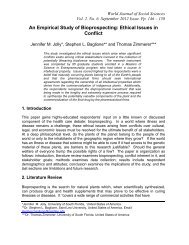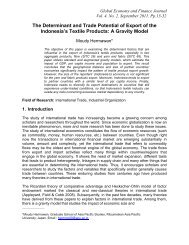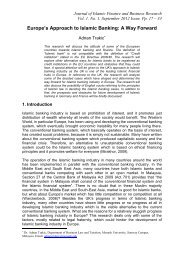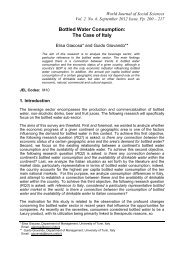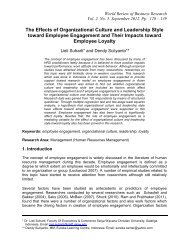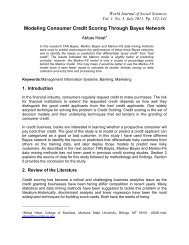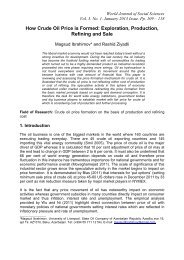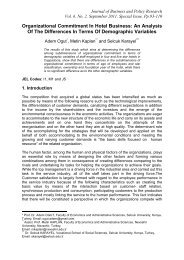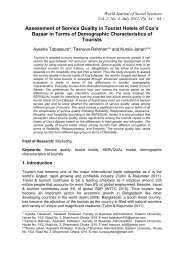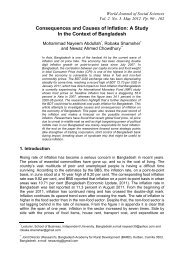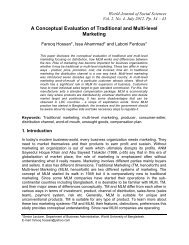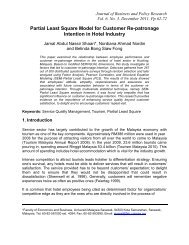Muhammad Faisol Chowdhury - Wbiaus.org
Muhammad Faisol Chowdhury - Wbiaus.org
Muhammad Faisol Chowdhury - Wbiaus.org
Create successful ePaper yourself
Turn your PDF publications into a flip-book with our unique Google optimized e-Paper software.
<strong>Chowdhury</strong>strategy which relates to every activity of the <strong>org</strong>anization set in the context of itshuman resource policies, culture, style and communications systems. The nature ofthe strategy depends on the <strong>org</strong>anizational context and can vary from <strong>org</strong>anization to<strong>org</strong>anization (Armstrong & Baron 2004).Performance evaluation output must be linked with other HRM activities andstrategic decisions making for the <strong>org</strong>anizational administrative and developmentalpurposes (Greer 2001; Cleveland, Murphy & Williams 1989). Islam (2006) in hisstudy found that, fewer than 20 percent Bangladeshi <strong>org</strong>anizations hold PMS onregular basis and only 10 percent <strong>org</strong>anizations link performance evaluation resultwith HR decision making. Furthermore, performance evaluations were typicallybased on supervisor‟s subjective judgements rather than on objective indicators ofperformance (HR Practices Survey BD 2006). This has led many Bangladeshiresearchers to speculate that PMS practices in Bangladeshi local private<strong>org</strong>anizations are full of errors, for example, annual performance evaluation canplace an excessive burden on the memory of a person who has to rate multipleemployees, and thus can result in biased or wrong judgements (HR Bangladesh2011). Also, supervisors‟ judgements may be influenced by stereotypes and otherpersonal beliefs or perceptions (Zafour 2009; Haque & Hossain 2009). For thesereasons, dissatisfaction with PMS among the local private <strong>org</strong>anizations is rampant.On the other hand, recent empirical researches conducted by Mahmood (2010) andAbdullah, Boyle and Joham (2010) showed that MNCs operating in Bangladesh aremoving away from using a traditional approach of rating-scale based PMS and arefocusing on more sophisticated and strategic PMS. It is also evident from their studythat these MNC are using performance evaluation outputs administratively wheneverthey are the basis for a decision about the employee‟s work conditions, includingpromotions, terminations, remunerations and rewards. Developmental uses ofperformance evaluation, which are geared toward improving employees„performance and strengthening their job skills, include counseling employees oneffective work and behaviors.A US study showed that top global <strong>org</strong>anizations use performance measures „...thatfocus on all the drivers of their business - financial performance, shareholder value,employees and customers‟ (Stark & Alper, pp.62). Another public sector focusedthrough research conducted by Bouckaert and Halligan (2008) highlighted that themore the quality of PMS is, the better is the growth and development of<strong>org</strong>anizations. Research by Nankervis and Leece (1999, p.91) indicated that<strong>org</strong>anizations are trying to relate individual performance more directly to theirstrategic business objectives. Researchers like Fletcher (1997), Schleicher,Greguras and Watt (2004, p.170) argued that, despite the practical andpsychological problem with employing PMS, <strong>org</strong>anizations can significantly benefitfrom it, assuming of course that the appraisals are conducted objectively andeffectively. Strengthening this point of view is done by the researchers like Taorminaand Gao (2009, p.105), indicating that employee acceptance of performanceappraisal can be critical to the success of the whole PMS system. Therefore, oneimportant concern becomes how to make PMS less objectionable to the people whoare being evaluated (Bernardin & Beatty 1984).155



